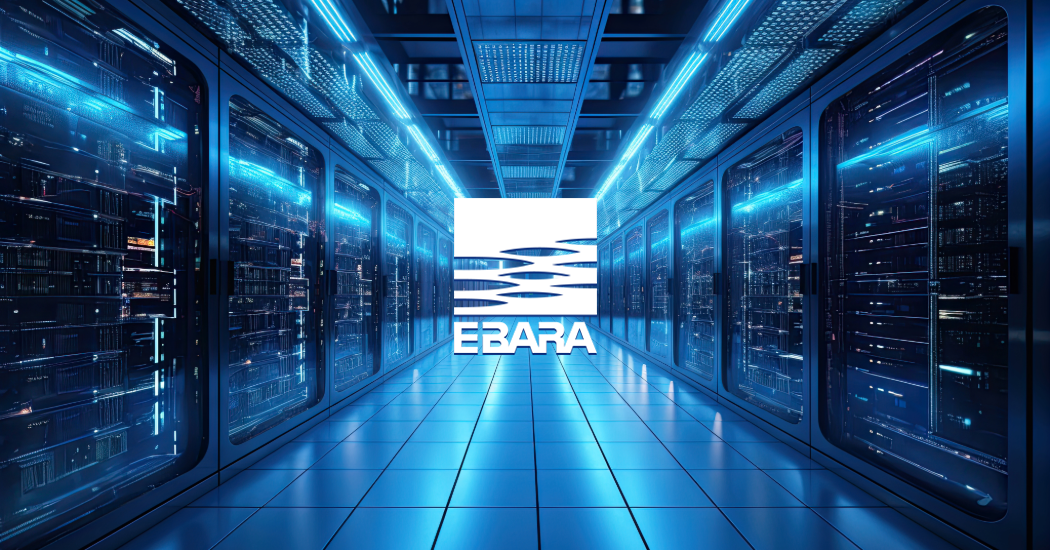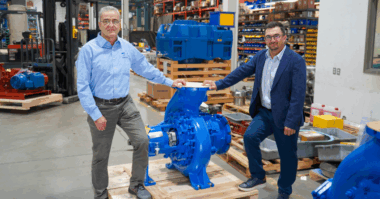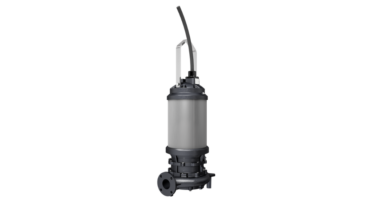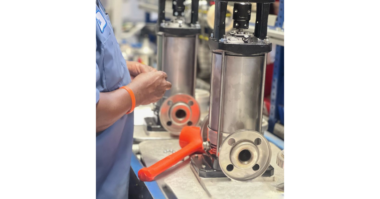Among pump manufacturers, there is a growing demand for reliable, efficient pump technology used within cooling systems that maintain Data Centers. Data Centers and their owners are judged on PUE (power usage effectiveness) as they are notorious for creating a large draw on the power grid and being a major contributor to the carbon footprint. The more efficient the cooling systems and the pumps supporting them, the better for efficient Data Center maintenance and reliability.
Ebara provides efficient pumping solutions that support successful cooling systems installed in Data Centers around the world. The technology has come a long way.
Evolution of Pump Cooling Systems for Data Centers
Gen. 1 Cooling Method
The traditional style of cooling data centers, Gen. 1, is similar to how a modern home is cooled, which is very inefficient, expensive and now considered antiquated. As the server’s technology advanced so did the ability to handle higher heat loads. Because of that you didn’t need to cool it to what would be a comfortable human temperature. Data could be stored at 90 degrees with no problems.
Gen. 2 Cooling Method
As servers and their chips’ technology advanced, higher heat capacity was introduced allowing for more efficient cooling methods using a “Liquid to Air” method such as Evaporative Cooling, or Gen. 2. This method had shortcomings in a wet bulb (humid) environment.
Gen. 3 Cooling Method
Because of humid complications, a hybrid Evaporative Cooling system (Gen. 3) was developed that featured patented heat exchangers and membranes that increased the efficiency of cooling even in these humid environments.
Gen. 4 (Direct-to-Chip) Cooling Method
With the proliferation and rapid adoption of Artificial Intelligence, servers and chips (like the Nvidia’s Blackwell chip) are being developed and deployed to support the increased processing needs. This, in turn, is creating servers which are often 4x as dense as their predecessors and expending so much heat that the adoption of Liquid-to-Liquid Data Center cooling methods are required to keep these servers cooled.
In this method, liquid coolant is pumped through piping directly onto a “cold plate” that sits atop a motherboard’s chips to draw off heat. This heat travels away from the data hall, through a chilled water loop, and is pumped to the facility’s cooling plant where it is released to atmosphere.
Because this system cools processors directly, it’s currently one of the two most effective and efficient forms of data center heat removal.
Gen. 5 (Immersion) Cooling Systems
Direct-to-Chip cooling systems (Gen. 4) are currently being deployed with Liquid-to-Air systems being the most common but also Liquid-to-Liquid systems beginning to garner attention, as well.
Complete motherboard and hardware are submerged in a tub of non-conductive, non-flammable, dielectric fluid contained within a leak-proof case. The dielectric fluid absorbs heat better than air and as heated, turns to vapor, condenses, and falls back into the fluid at a cooler temperature, therefore, making it self-cooling.
Because this system cools the motherboard and hardware directly, it’s currently one of the two most effective and efficient forms of data center heat removal, however, without the risk of corrosion and electrocution present in some direct to chip cooling systems.
These “Gen. 4” (Direct-to-Chip) & “Gen. 5” (Immersion Cooling) cooling systems feature a higher PUE than any of the prior generations of systems, making them the most efficient while boasting the highest cooling capacity on the market.
For more information about how EBARA pumps are uniquely positioned to offer efficient and reliable Data Center cooling system options, please follow this link: https://www.pumpsebara.com/
Chris Spiteri is the OEM National Sales Manager for EBARA Pumps and can be reached at 803-448-4088 or cspiteri@pumpsebara.com.




